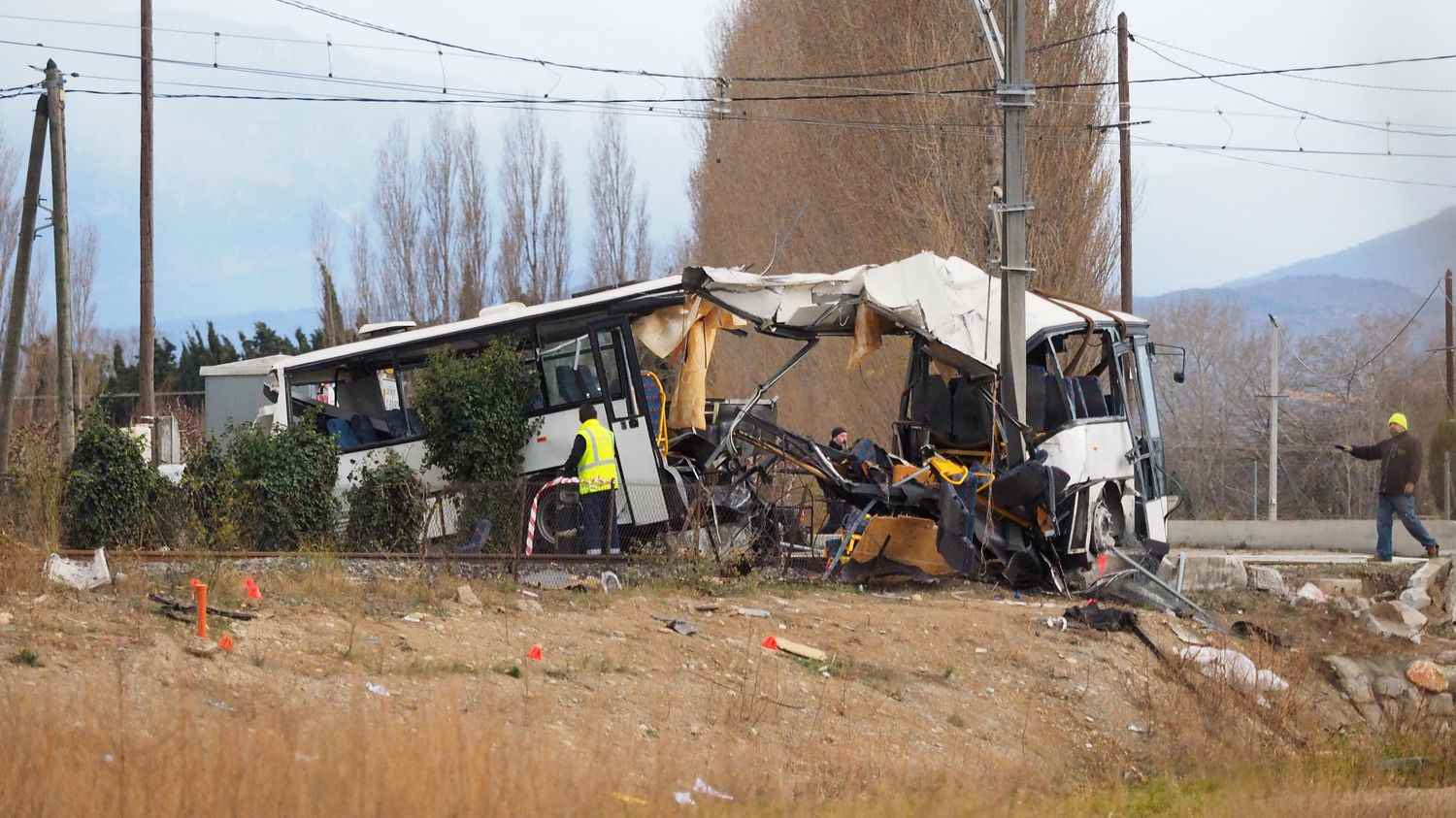It was December 14, 2017, near Perpignan. Six schoolchildren aged 11 to 13 were killed, 17 others injured, in the collision of their school bus and a TER, on a level crossing in Millas. In shock, the bus had been cut in two. The driver of the bus is judged from Monday for homicides and involuntary injuries, before the criminal court of Marseilles, competent in matters of collective accidents in the south of France.
Two essential questions will be raised during this trial, which will last three weeks: that of the proper functioning – or not – of the level crossing barriers, and that of the medical treatment observed by the driver.
Level crossing barriers: open or closed?
The driver repeats it since her first hearing in police custody, the day after the collision: according to her, the barriers were lifted. Nadine Oliveira, 53 years old today, is therefore committed to this level crossing that she knows, since she has been going there six times a day for almost three months. Several witnesses, including children in the bus, say like her.
But the two most credible witnesses say the opposite: two maintenance technicians who observed everything from the other side of the tracks. They were in their van, stopped at the barrier — closed, therefore, according to them. In addition, the technical expertise does not show any malfunction. The driver, 53, is therefore tried for homicide and involuntary injury, by her inattention and by recklessness in forcing the passage and the barrier.
The investigation also revealed that Nadine Oliveira was on automatic pilot for 90 seconds before the accident. She braked suddenly, too late, despite the train driver’s honking.
Taking sleeping pills: the driver able to drive or not?
The bus driver was taking sleeping pills, in theory incompatible with driving. Zopiclone, precisely, a sleeping pill sold by Sanofi under the name Imovane. She took it in the evening, to counter insomnia, for almost seven years. This drug is however prescribed in theory for shorter periods in theory, a few weeks or even a few months. This hypnotic can cause drowsiness, decreased alertness and increased reaction time. It is therefore written on the box: “DANGER: do not drive”.
During the investigation, lawyers for victims pointed to the responsibility of the doctors. They were finally exonerated, because according to various experts, the sleeping pill had no influence on Nadine Oliveira’s driving abilities: with half a tablet in the evening at 8 p.m., the effect had dissipated on next afternoon, at the time of the accident.
At the end of the trial, the judgment should be deliberated and delivered before Christmas.
